Foxglove Plant
- December 1, 2023
- 0 comment
The Foxglove plant, scientifically known as Digitalis purpurea, is a captivating biennial herb that graces gardens with its tall, elegant spikes adorned with tubular flowers. Native to Europe, this enchanting plant has also found its way into North American and Asian landscapes. Renowned for its striking beauty, the Foxglove is characterized by its large, bell-shaped blossoms that can vary in color from shades of pink and purple to white.
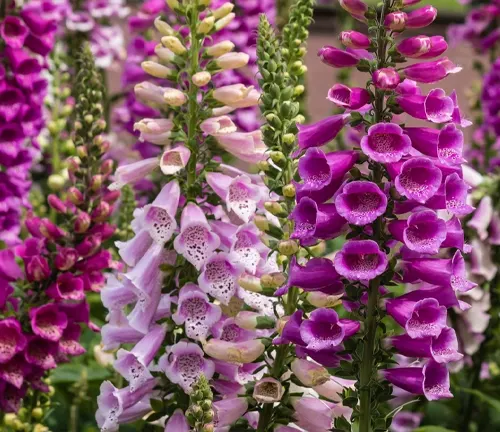
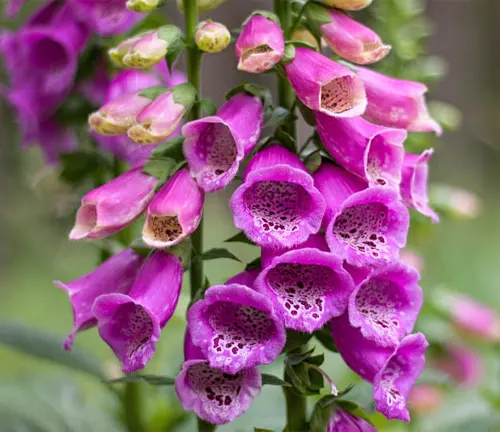
However, despite its aesthetic appeal, it’s crucial to note that all parts of the Foxglove contain potent cardiac glycosides, compounds that can be toxic if ingested. These glycosides have been used in traditional medicine for heart conditions, albeit with extreme caution due to their narrow therapeutic window. In contemporary gardens, the Foxglove is often valued for its ornamental qualities and as a magnet for pollinators like bees.
Gardening enthusiasts appreciate its versatility, as it can thrive in a range of soil types and light conditions. Whether adding a touch of wild elegance to cottage gardens or enhancing the backdrop of more formal landscapes, the Foxglove remains a fascinating botanical specimen with a rich history and a dual nature of allure and caution.
| Characteristic | Description |
|---|---|
| Scientific Name | Digitalis purpurea |
| Plant Type | Biennial (can act as a short-lived perennial) |
| Native To | Europe, but also found in North America and Asia |
| Height | Varied, typically 3 to 6 feet (0.9 to 1.8 meters) |
| Flower Type | Tubular, bell-shaped flowers |
| Flower Colors | Pink, purple, white, and various shades |
| Toxicity | Contains cardiac glycosides; can be toxic if ingested |
| Traditional Use | Historic use in traditional medicine for heart conditions |
| Cultivation | Adaptable to various soil types and light conditions |
| Pollinator Attraction | Attracts bees and other pollinators |
| Lifespan | Typically biennial, but can behave as a short-lived perennial |
| Common Use | Ornamental plant in gardens |
| Caution | Careful handling due to toxicity; keep away from children |
Botanical Beauty of Foxglove Plant
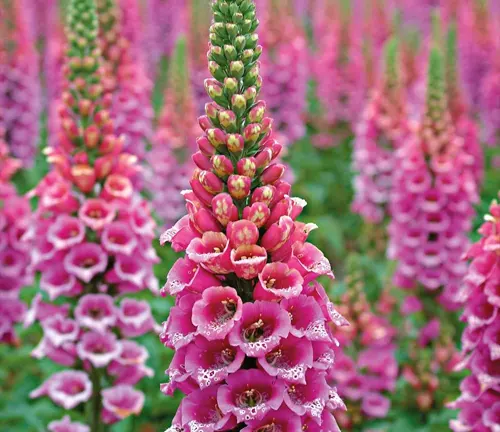
The Foxglove plant, scientifically known as Digitalis purpurea, stands as a testament to botanical beauty. With its towering spikes adorned by tubular flowers, this biennial herb graces gardens with an elegant presence. The large, bell-shaped blossoms come in an array of colors, ranging from enchanting shades of pink and purple to pristine white. Despite its arresting appearance, it conceals a cautionary note—every part of the Foxglove contains potent cardiac glycosides, adding an intriguing duality to its allure.
Woodland Elegance
In the wild, Foxglove exhibits a natural elegance that seamlessly integrates with woodland landscapes. Its tall spikes emerge amidst the greenery, creating a striking contrast and adding a touch of wild charm to forested areas. The woodland setting enhances the plant’s allure, portraying it as a graceful inhabitant of shaded realms. This natural habitat showcases the adaptability of the Foxglove, underscoring its ability to thrive in diverse environments.
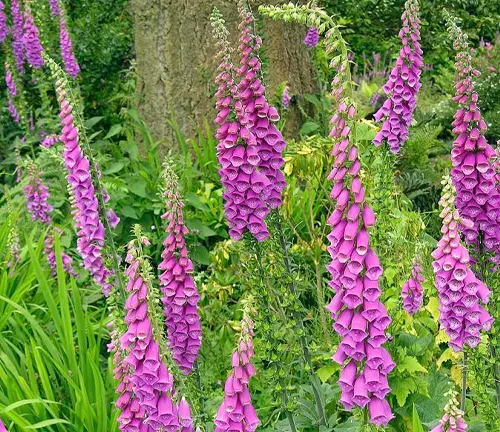
Ecological Importance
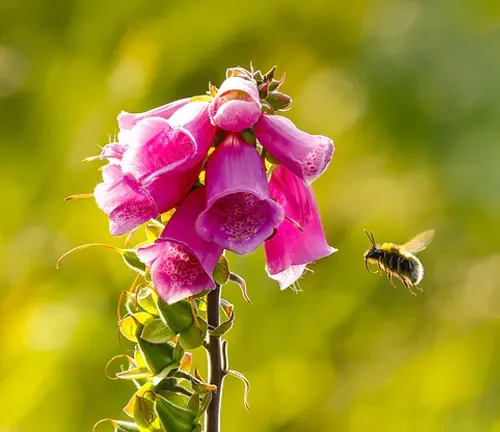
Beyond its visual appeal, the Foxglove plays a vital role in supporting ecosystems. The tubular flowers act as a beacon for pollinators, with bees being particularly drawn to their nectar-rich blossoms. This ecological partnership highlights the plant’s significance in fostering biodiversity, contributing to the intricate dance of nature as it facilitates the pollination process and supports the health of surrounding plant life.
Cultivation and Conservation
Cultivating the Foxglove requires a delicate balance, considering its toxicity. Gardeners appreciate its versatility, as it can adapt to various soil types and light conditions. However, the conservation aspect comes into focus due to its popularity and potential overharvesting. Responsible cultivation practices and awareness of its wild habitats contribute to the conservation of this botanical gem.
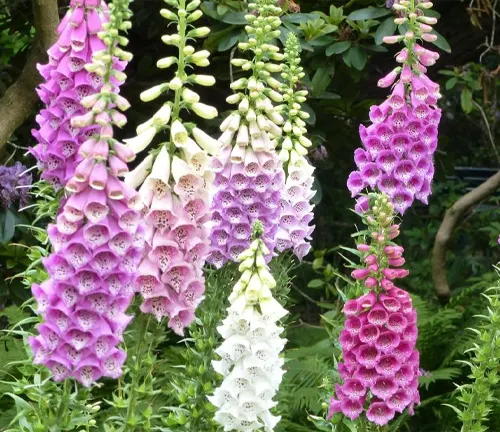
Fragrance
While the Foxglove is primarily known for its visual impact, it surprises with a subtle fragrance that adds an olfactory dimension to its allure. The delicate scent, often overlooked in favor of its visual splendor, provides an unexpected sensory experience for those who take the time to appreciate the plant up close.
Soil Stabilization
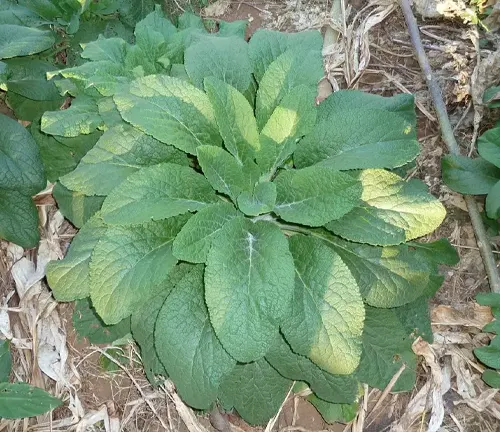
Beyond its ornamental role, the Foxglove contributes to soil stabilization. Its robust root system helps prevent soil erosion, particularly in areas with sloping terrain. This hidden ecological benefit adds a layer of practicality to its aesthetic appeal, making it a valuable asset in gardens and natural landscapes alike.
Common Uses
In gardens, the Foxglove serves as a captivating ornamental plant, adding a touch of wild elegance to various settings. Its presence is often sought after in cottage gardens, formal landscapes, and even in wildflower meadows. The visual impact of its tall spikes and vibrant flowers makes it a favorite among garden enthusiasts, further solidifying its place in horticultural traditions.
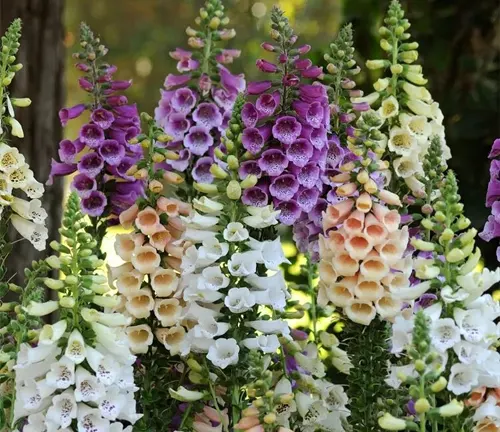
Benefits
Despite its toxicity, the Foxglove has historical significance in traditional medicine. The cardiac glycosides found in the plant have been cautiously utilized for heart conditions, albeit with meticulous dosage considerations. While modern medicine has largely replaced such practices, the historical use of the Foxglove underscores its complex relationship with humans, as both a potential remedy and a source of caution.
Different Species
Digitalis purpurea
(Common Foxglove)
This is the most well-known species, native to Europe and widely cultivated for its tall spikes of tubular flowers. The flowers come in various shades including purple, pink, and white.
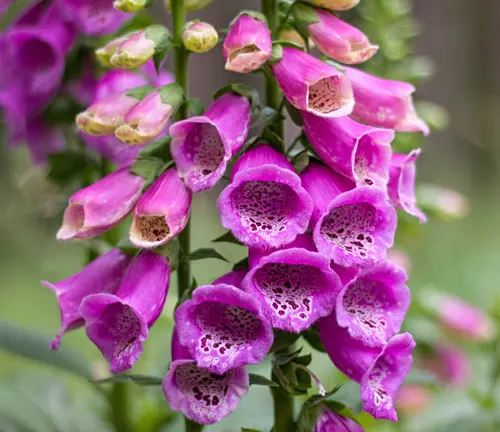

Digitalis lutea
(Straw Foxglove)
Unlike the typical colors of Foxglove flowers, D. lutea features pale yellow to cream-colored blossoms. Native to southeastern Europe, it offers a unique variation in color compared to its more common relatives.
Digitalis grandiflora
(Yellow Foxglove)
As the name suggests, this species bears yellow flowers. It’s a perennial foxglove that’s known for its shorter stature and rich green foliage. It’s native to southeastern Europe.
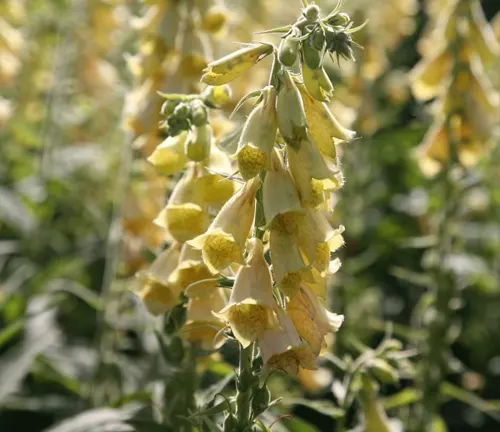
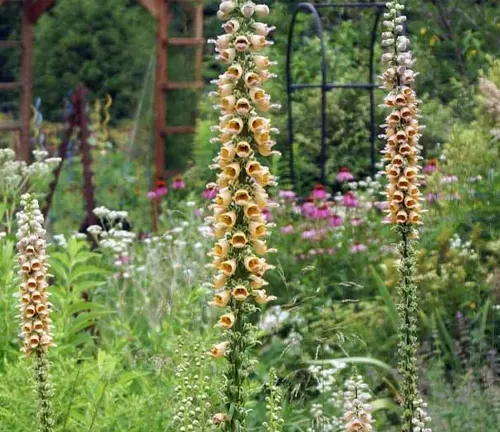
Digitalis ferruginea
(Rusty Foxglove)
This species is recognized for its distinctive rusty-colored spikes of flowers. It’s a perennial variety with a more subdued and earthy color palette compared to the vibrant hues of D. purpurea.
Digitalis obscura
(Sunset Foxglove)
Native to Spain and Portugal, this species has smaller, rusty-orange flowers and a more compact growth habit compared to some other foxglove varieties.

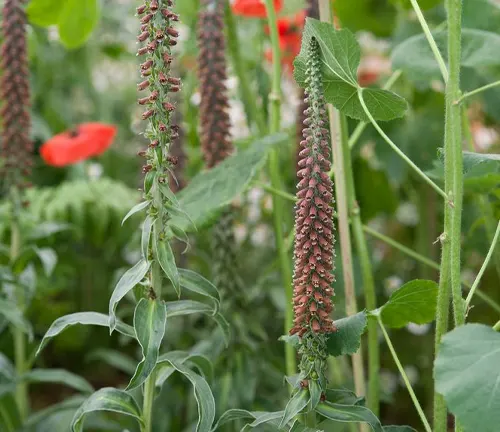
Digitalis parviflora
(Small-Flowered Foxglove)
This species has smaller, more delicate flowers compared to the common foxglove. It’s native to southwestern Europe and is recognized for its diminutive yet charming appearance.
Digitalis mertonensis
(Strawberry Foxglove or Merton’s Foxglove)
This cultivar is a hybrid between D. purpurea and D. grandiflora, featuring spikes of flowers in shades of pink with pronounced speckling on the inside of the flower. It’s a popular choice for gardens.

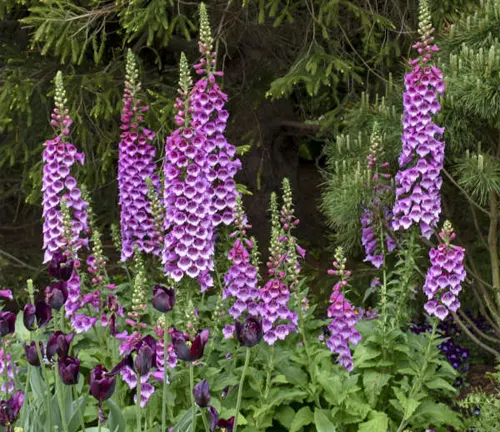
Digitalis ‘Dalmatian Series’
This is a group of hybrid foxgloves known for their compact size and early flowering. They come in various colors such as lavender, cream, and white, offering a more controlled and tidy appearance in gardens.
Frequently Asked Questions (FAQs)
- Are Foxglove plants poisonous?
Yes, all parts of the Foxglove plant contain cardiac glycosides, which can be toxic if ingested. Care should be taken to keep it away from children and pets. - How tall do Foxglove plants typically grow?
Depending on the species and cultivar, Foxglove plants can range from 3 to 6 feet (0.9 to 1.8 meters) in height. - What colors do Foxglove flowers come in?
Foxglove flowers come in various colors, including shades of pink, purple, white, cream, and yellow, depending on the species and cultivar. - Can I grow Foxglove in my garden?
Foxglove is adaptable to various soil types and light conditions, making it suitable for many gardens. However, caution is advised due to its toxicity. - How do I care for Foxglove plants?
Foxglove plants generally prefer well-draining soil and partial shade. Regular watering and deadheading spent flowers can help promote healthy growth. - Are there perennial Foxglove varieties?
Yes, some Foxglove species, like Digitalis grandiflora, are perennial. However, the more common Digitalis purpurea is a biennial that can act as a short-lived perennial. - Do Foxgloves attract pollinators?
Yes, Foxglove flowers are known to attract pollinators, especially bees. Their tubular blossoms provide a good nectar source. - Can I use Foxglove in cut flower arrangements?
While Foxglove flowers are visually stunning, they have a short vase life. Caution should be exercised due to their toxicity, and contact with skin should be limited. - Is Foxglove used in traditional medicine?
Yes, historically, Foxglove has been used in traditional medicine for heart conditions. However, its use is not recommended without proper knowledge and supervision due to its toxicity. - How do I propagate Foxglove plants?
Foxgloves can be propagated from seeds. Sow the seeds in a well-prepared seedbed, and they will typically germinate in a few weeks. Some varieties can also be propagated through division. - Are there dwarf or compact Foxglove varieties?
Yes, there are compact varieties like the ‘Dalmatian Series,’ known for their smaller size and early flowering. - Can I grow Foxgloves in containers?
Yes, Foxgloves can be grown in containers, but make sure the containers provide good drainage, and the plants receive adequate sunlight.


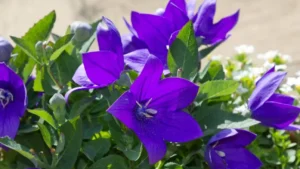






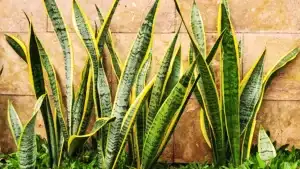

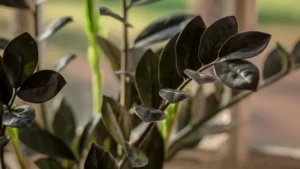
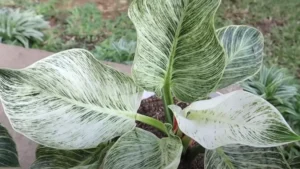
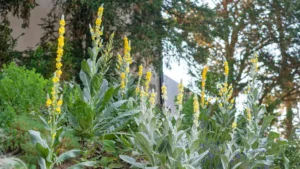
Leave your comment